Are you considering subletting your apartment but feeling overwhelmed by the terms and conditions involved? You're not alone! Understanding the rules and regulations can help ensure a smooth process for both you and your subletter. So, if you want to learn about crafting a crystal-clear subletting agreement that protects everyone involved, keep reading!
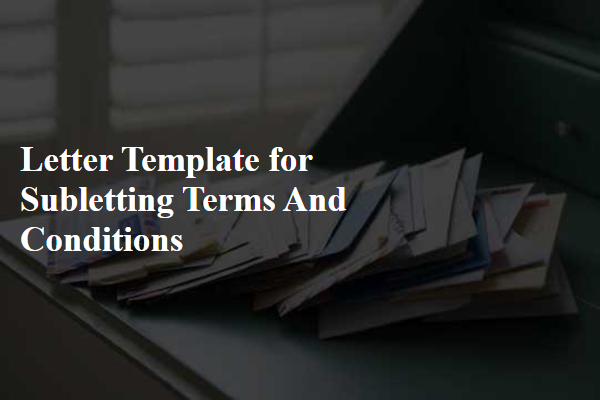
Tenant and Subtenant Information
Subletting agreements necessitate clear delineation of responsibilities and terms between original tenant (primary renter) and subtenant (individual assuming temporary lease of the property). The primary renter retains accountability for the lease agreement with the landlord, including timely rent payments. Key considerations include the sublet duration, defined as the specific time frame for which the subtenant will occupy the property, typically ranging from a few months to a year. Property address must be clearly stated, including unit number and city for accuracy. Both parties must provide personal information, including full names, contact numbers, and email addresses to facilitate communication. Security deposits, often equivalent to one month's rent, need clarification regarding handling and return conditions at the end of the sublet period to protect both parties' interests. It's also crucial to specify any amenities included, such as utilities, internet, and access to communal areas, to avoid misunderstandings. Compliance with original lease terms ensures that the sublet arrangement is legally sound and protects the primary renter's relationship with the landlord. Legal implications could arise if subletting violates the lease agreement, potentially leading to eviction or financial penalties.
Lease Duration and Rent Payment Details
The lease duration for subletting agreements typically spans six months, with a possibility of extension based on mutual consent from both the primary tenant (current leaseholder) and the subtenant (individual seeking temporary housing). Rent payment details entail a fixed monthly payment, due on the first of each month, amounting to $1,200, which is the same as the original lease agreement at the property located in downtown San Francisco. Additionally, security deposits of $1,200 may be collected upfront, safeguarding against damages or unpaid rent during the sublet term. It is imperative to outline that utilities, including electricity, water, and internet, are the responsibility of the subtenant, and these arrangements must be documented in writing to prevent disputes.
Maintenance Responsibilities and Property Condition
Maintenance responsibilities significantly impact the overall condition of a rental property, particularly regarding subletting arrangements. It is essential for subtenants to understand that basic upkeep, such as timely reporting of maintenance issues and regular cleaning, plays a vital role in preserving the property's integrity. Landlords often outline expectations for both primary tenants and subtenants to maintain areas like bathrooms, kitchens, and living rooms in good condition. Specific terms may include routine tasks, such as changing air filters or ensuring plumbing fixtures remain functional, along with penalties for neglect. Additionally, the written sublease agreement should detail the conditions under which maintenance requests should be submitted, often requiring documented communication via email or a maintenance app. By adhering to these stipulations, subtenants can help ensure a harmonious living environment while safeguarding the property against potential deterioration.
Termination Clause and Notice Period
Subletting agreements require clear communication about termination clauses and notice periods. In most cases, a termination clause specifies conditions under which the sublease can be ended prematurely. This often includes events like breach of contract (failure to comply with the agreed terms), non-payment of rent, or significant property damage. Notice periods usually range from 30 to 60 days, during which the subletter must inform the primary tenant and landlord of the intention to terminate the agreement. Such notice should be in written form, ensuring clarity in communication. The stipulated period allows all parties involved to prepare for the transition, facilitating a smoother handover of responsibilities concerning the leased space.
Legal Compliance and Liability Provisions
Subletting arrangements require adherence to legal compliance and liability provisions to protect all parties involved. According to local tenant laws, landlords must provide written consent for subletting agreements, often found in rental statutes (such as those outlined in California Civil Code Section 1995.210). Both sublessor (primary tenant) and sublessee (new tenant) must understand their responsibilities regarding property maintenance and adherence to the original lease agreement terms. Liability coverage typically incorporates renter's insurance that protects against damages (an average policy cost is about $15 to $30 per month). Furthermore, liability clauses often specify who is responsible for damages incurred during occupancy, ensuring both parties are aware of potential financial obligations. Non-compliance with these terms can lead to eviction proceedings or legal disputes, emphasizing the importance of a well-documented agreement.

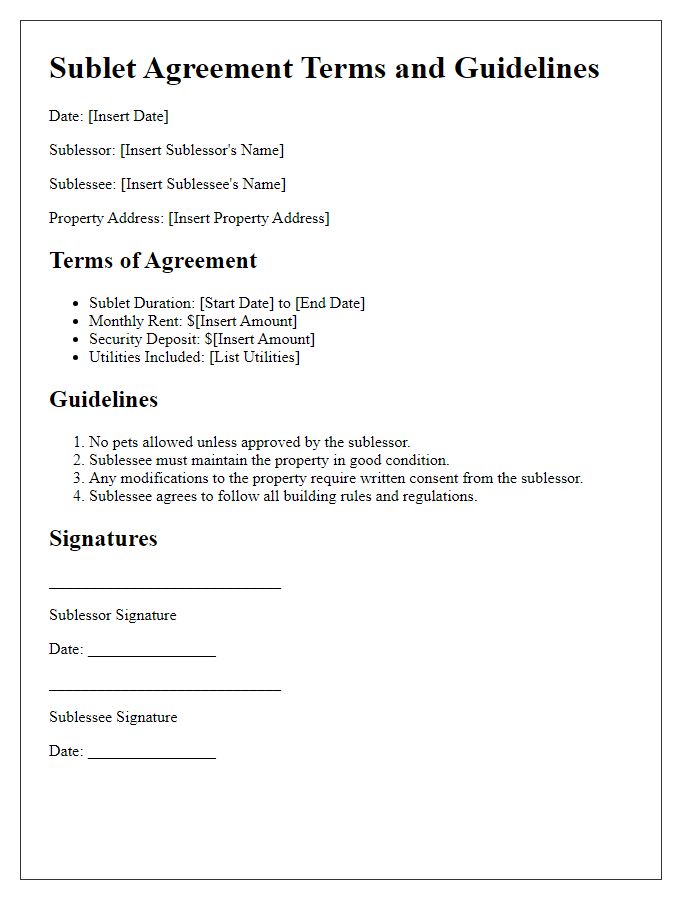
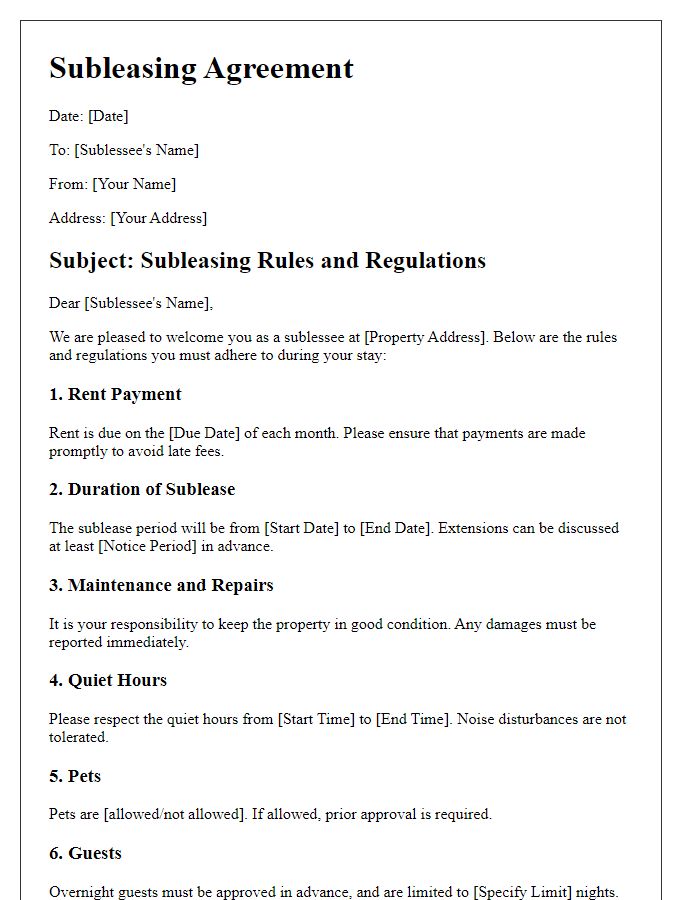
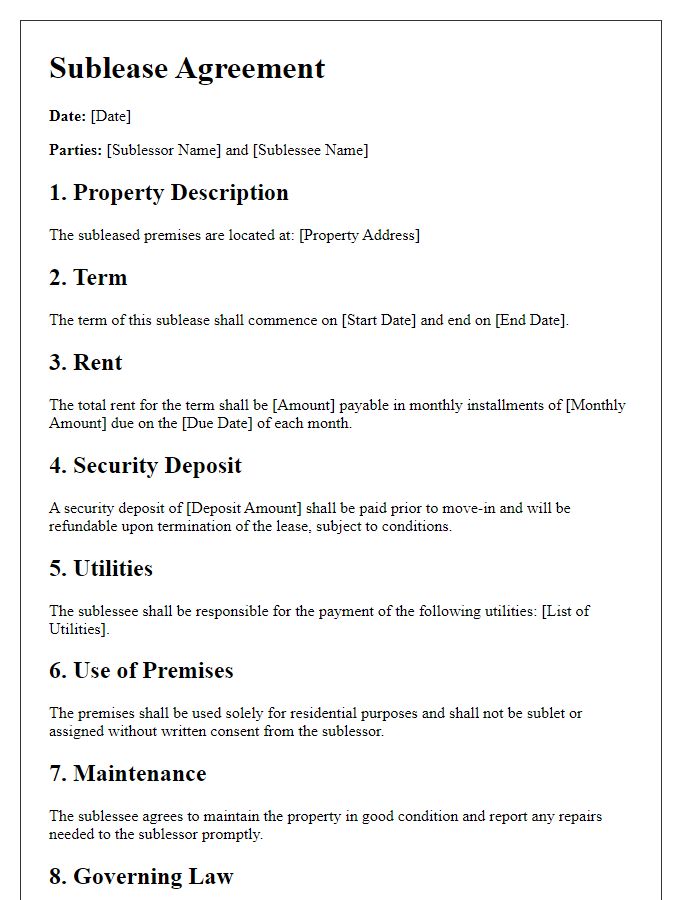
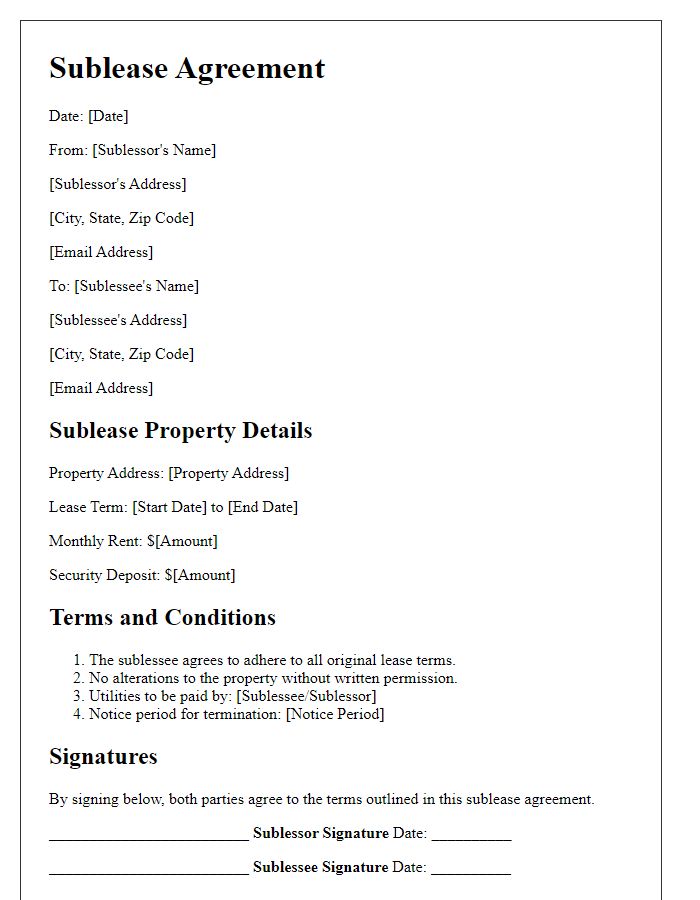
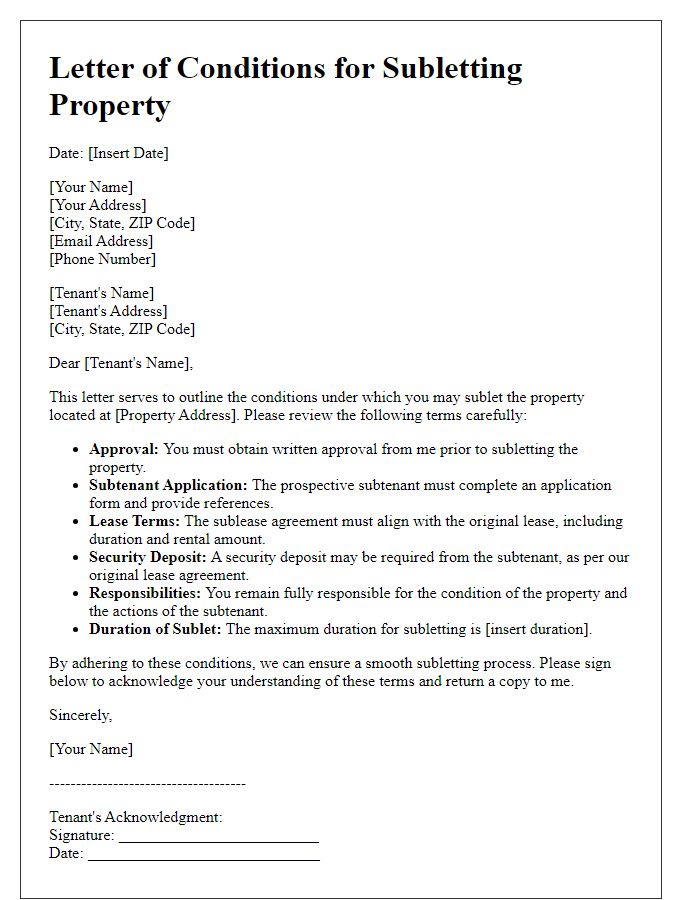
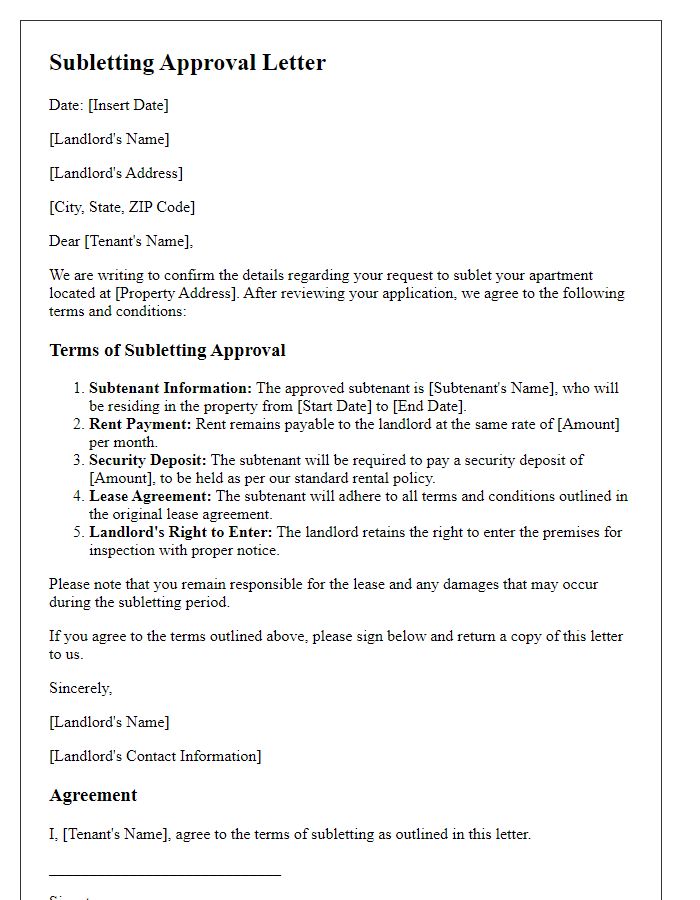
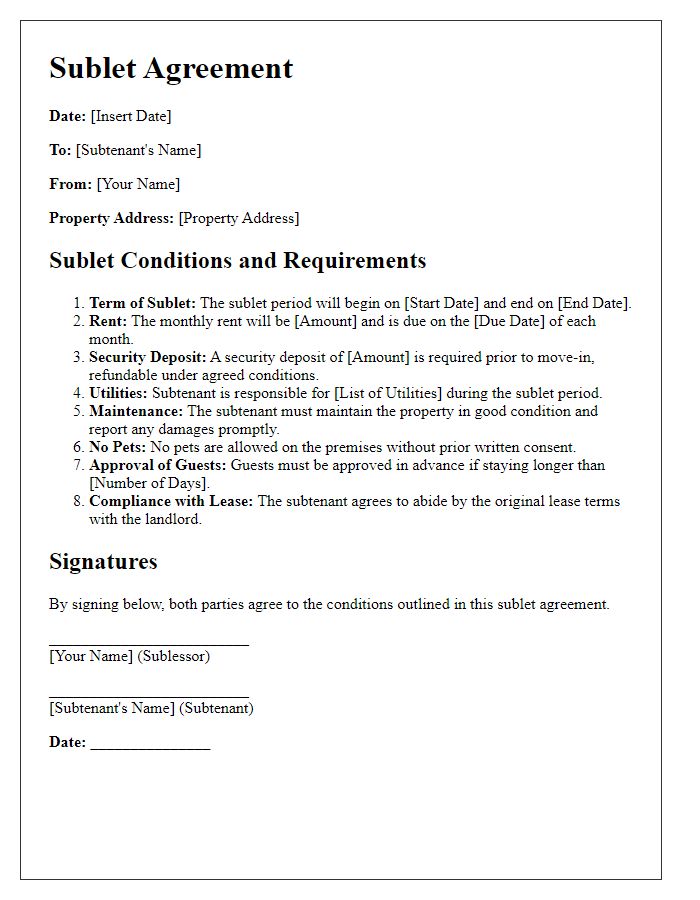
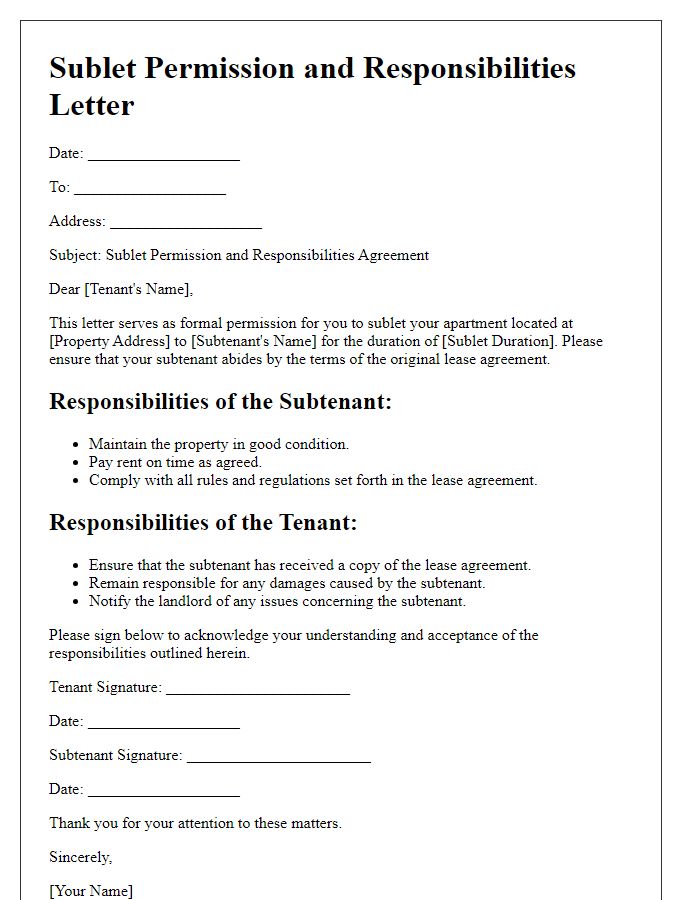
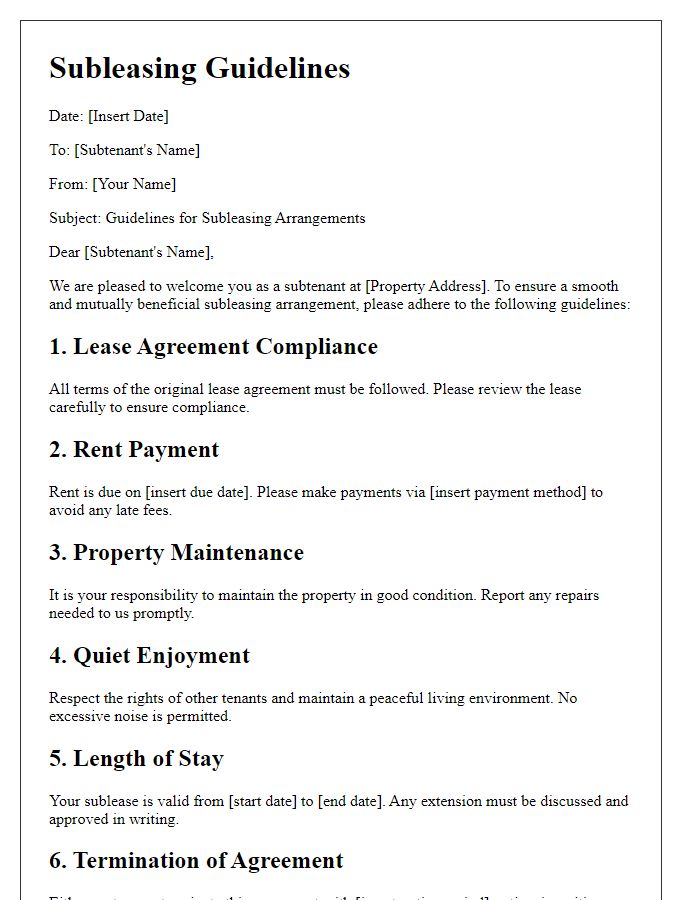
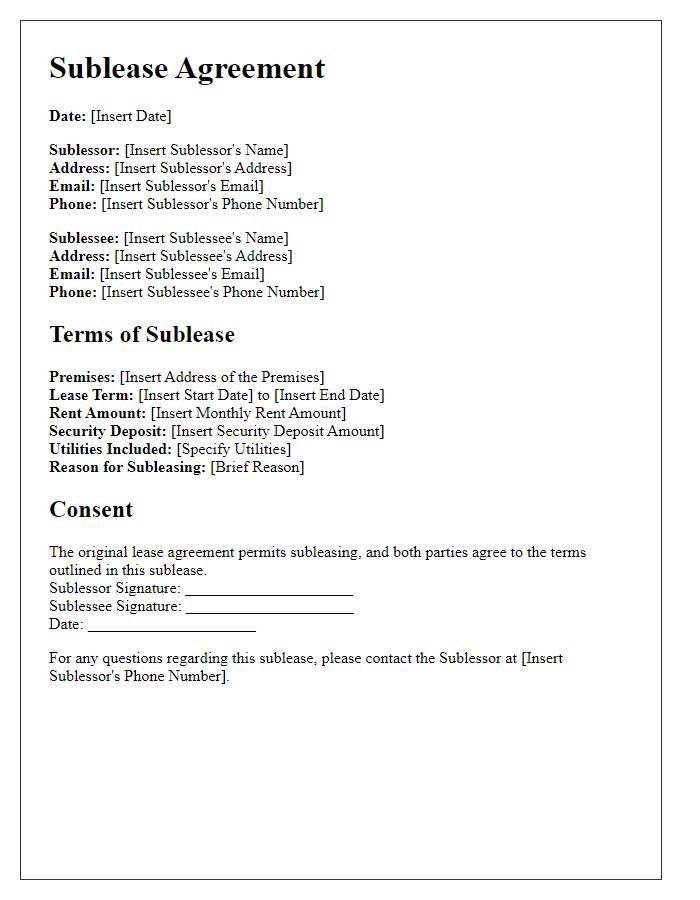

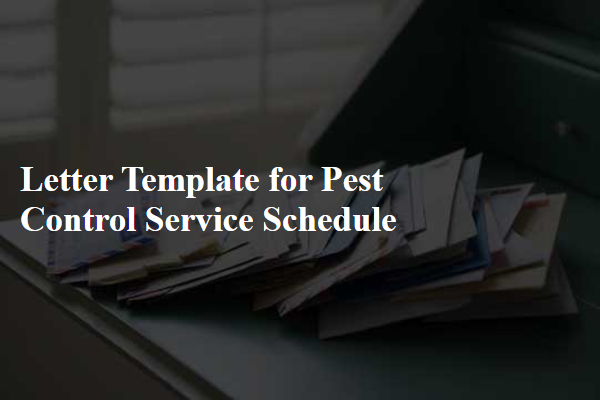
Comments